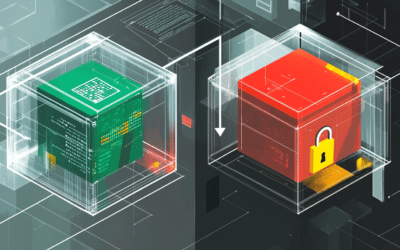
Revolutionizing TEM: The Synergy of Enov8 and Ansible Lightspeed
November, 2023
by Jane Temov.
Jane Temov is an IT Environments Evangelist at Enov8, specializing in IT and Test Environment Management, Test Data Management, Data Security, Disaster Recovery, Release Management, Service Resilience, Configuration Management, DevOps, and Infrastructure/Cloud Migration. Jane is passionate about helping organizations optimize their IT environments for maximum efficiency.
In the fast-paced world of IT operations and software development, efficiency and agility are no longer optional—they’re imperatives. Enov8, a leader in environment management, offers solutions that streamline and optimize the process of managing complex IT environments. On the other side of the technological spectrum, Red Hat’s Ansible Lightspeed stands as a beacon of innovation in IT automation, promising enhanced speed, scalability, and intelligence in automation tasks.
Innovate with Enov8
A Platform of Insight
Managing your IT & Test Environments, Releases & Data.
This article delves into how the synergy between Enov8’s Environment Manager and Red Hat Ansible Lightspeed is poised to revolutionize the realm of test environment management.
The Evolving Landscape of IT Automation
The realm of IT automation has undergone a remarkable transformation over the years, evolving from simple script-based tasks to sophisticated, AI-driven solutions. In the early days, automation in IT was a matter of convenience, aimed at reducing repetitive tasks. However, as technology landscapes grew in complexity, the role of automation shifted significantly. It became a critical element in ensuring agility, consistency, and efficiency in IT operations.
This evolution has been driven by the burgeoning needs of businesses to respond swiftly to market changes and manage increasingly intricate and distributed systems. Automation tools have moved beyond mere task execution to become integral in strategic decision-making processes, particularly in areas like continuous integration/continuous delivery (CI/CD), cloud management, and infrastructure provisioning.
The current trend in IT automation emphasizes intelligent, scalable solutions that can anticipate and adapt to the dynamic needs of businesses. Tools like Ansible Lightspeed represent this new wave of intelligent automation, which combines traditional automation capabilities with advanced features like AI and machine learning. This shift is not just about doing tasks faster; it’s about doing them smarter, with greater accuracy and foresight.
As we continue to witness rapid technological advancements, the future of IT automation is poised to be more predictive, self-adaptive, and integrated into the broader IT ecosystem. This progress is not just enhancing operational efficiency but also enabling businesses to unlock new potentials and innovate at an unprecedented pace.
Enov8 Environment Manager: A Synopsis
Enov8’s Environment Manager emerges as a pivotal tool in the IT landscape, specifically tailored for managing and orchestrating complex test environments. At its core, Enov8 provides a framework for overseeing various aspects of IT environments, including configuration, allocation, usage, and disposal. This comprehensive management extends across physical, cloud, and hybrid infrastructures, making it an indispensable asset for organizations dealing with multifaceted IT ecosystems.
Key to Enov8’s success is its embrace of Infrastructure as Code (IaC), a practice that treats infrastructure configuration with the same rigor as application code. Through this approach, Enov8 enables teams to automate and streamline the setup, maintenance, and teardown of environments, ensuring consistency and reducing manual errors.
Furthermore, Enov8’s integration with Ansible—its preferred IaC solution—has been a game-changer. This integration allows users to create, manage, and execute Ansible Playbooks and Inventories directly from the Enov8 platform. The power of Ansible lies in its simplicity and flexibility, making it an ideal match for Enov8’s comprehensive environment management capabilities. Users can define the desired state of their environments in code, which Ansible then enforces, ensuring that environments are provisioned and maintained accurately and efficiently.
As we step into the era of Ansible Lightspeed, Enov8’s alignment with this advanced automation tool opens new vistas. The synergy between Enov8’s holistic approach to environment management and Ansible Lightspeed’s enhanced automation capabilities is set to redefine the standards of efficiency, reliability, and scalability in managing test environments.
Ansible Lightspeed: Next-Generation Automation
Ansible Lightspeed marks a significant advancement in the sphere of IT automation. Building upon the solid foundation of Ansible, Lightspeed introduces enhancements that are pivotal for large-scale and complex automation tasks. The essence of Lightspeed lies in its improved execution engine, designed for heightened performance and efficiency. This means faster execution times and reduced resource consumption, vital for enterprises with extensive IT infrastructures.
A notable feature of Ansible Lightspeed is its integration with generative AI, particularly with IBM WatsonX Code Assistant. This integration allows Ansible Lightspeed to offer AI-driven code recommendations, enhancing the efficiency and accuracy of automation scripts. Users can input prompts, which the system then interprets to generate code based on established Ansible best practices. This not only speeds up the development process but also ensures adherence to high standards of code quality.
Furthermore, Ansible Lightspeed’s scalability is a game-changer for complex environments. Its ability to handle larger inventories and more intricate workflows makes it a perfect fit for Enov8’s Environment Manager. When managing test environments, which often require rapid provisioning and reconfiguration, Lightspeed’s robustness and agility can significantly streamline operations.
In summary, Ansible Lightspeed’s advanced features—ranging from AI-assisted code generation to enhanced scalability—position it as a frontrunner in the next generation of IT automation tools. Its integration into Enov8’s ecosystem promises to not just simplify but transform how test environments

Synergy Between Enov8 and Ansible Lightspeed
The integration of Enov8 Environment Manager with Red Hat Ansible represents a synergistic leap forward in the realm of test environment management. This collaboration harnesses the strengths of both platforms, offering an unprecedented level of efficiency and scalability.
Enhanced Automation Efficiency: Lightspeed’s advanced automation capabilities, augmented by AI-driven code generation, empower Enov8 users to create and maintain environment configurations more swiftly and accurately. This efficiency is crucial in rapidly changing test environments where time and precision are of the essence.
Scalability in Complex Environments: Lightspeed’s ability to handle large-scale and intricate automation tasks aligns perfectly with Enov8’s capacity for managing complex environments. This scalability ensures that even the most demanding test scenarios can be accommodated, facilitating seamless environment provisioning and reconfiguration.
AI-Powered Innovation: The integration of WatsonX Code Assistant with Lightspeed introduces an AI element to Enov8’s environment management. This feature enables users, even those with basic coding knowledge, to contribute effectively, translating their expertise into functional Ansible code. This democratization of automation broadens the scope of who can contribute to environment management, enhancing team collaboration and innovation.
Maintaining Code Quality and Best Practices: With the AI-assisted capabilities of Lightspeed, Enov8’s environment management not only becomes more efficient but also adheres to high standards of code quality. The AI-driven recommendations ensure that best practices are consistently applied, enhancing the reliability of the test environments.
In conclusion, the synergy between Enov8 and Ansible Lightspeed is a significant development in test environment management. It brings together the best of environment orchestration and advanced automation, promising to transform the way organizations manage their test environments in terms of efficiency, scalability, and innovation.
Case Studies and Use Cases
In order to truly grasp the potential of the synergy between Enov8’s Environment Manager and Red Hat Ansible Lightspeed, let’s explore a few hypothetical use cases and real-world scenarios where this integration could prove transformative.
Use Case 1: Rapid Environment Provisioning for Agile Development Imagine a software development team working on a critical project that requires multiple test environments with various configurations. Using Enov8 in conjunction with Ansible Lightspeed, the team can define environment requirements in code and quickly provision the necessary infrastructure. Lightspeed’s AI-driven code assistance ensures that the environment is set up efficiently and adheres to best practices. This streamlines the development and testing process, enabling the team to meet tight deadlines and deliver high-quality software faster.
Use Case 2: Continuous Integration and Delivery (CI/CD) Pipelines In a CI/CD pipeline, where code is continuously built, tested, and deployed, test environments play a pivotal role. Enov8’s Environment Manager, integrated with Ansible Lightspeed, can automate the creation and teardown of test environments as part of the pipeline. This ensures consistent testing environments for each code change, reducing the risk of issues arising in production. The scalability of Lightspeed allows organizations to handle CI/CD pipelines with a high frequency of code changes efficiently.
Use Case 3: Hybrid and Multi-Cloud Testing Many organizations today operate in hybrid or multi-cloud environments, making testing complex due to varying infrastructures. Enov8’s ability to manage diverse environments seamlessly, coupled with Lightspeed’s scalability, allows for efficient testing across different cloud providers and on-premises infrastructure. This flexibility ensures that test environments mirror the production environment accurately, improving the reliability of testing outcomes.
Use Case 4: Disaster Recovery Testing Testing disaster recovery scenarios is critical for ensuring business continuity. Enov8’s Environment Manager, integrated with Ansible Lightspeed, simplifies the process by automating the creation of disaster recovery test environments. The AI-driven code assistance ensures that the failover and recovery procedures are correctly implemented. This not only reduces the time and effort required for disaster recovery testing but also enhances its reliability.
These use cases exemplify how the synergy between Enov8 and Ansible Lightspeed can address diverse challenges in test environment management, ultimately leading to more efficient, reliable, and agile IT operations.
Challenges and Considerations
While the integration of Enov8 with Ansible Lightspeed opens new frontiers in test environment management, it is not without its challenges. One key consideration is the learning curve associated with adopting new technologies, especially when AI and advanced automation are involved. Organizations must invest in training their staff to harness the full potential of these tools effectively.
Another aspect to consider is the integration process itself. Ensuring seamless interoperability between Enov8 and Lightspeed requires meticulous planning and execution. Furthermore, as with any sophisticated technology, maintaining security and compliance within this integrated framework is paramount. Organizations must be vigilant in monitoring and updating their systems to safeguard against vulnerabilities.
Lastly, the cost implications of adopting and maintaining such advanced solutions must be carefully weighed against their benefits. While the long-term gains in efficiency and scalability are clear, organizations must assess the initial investment and ongoing operational costs. Implementing proper cost controls and ROI analysis is essential to justify the expenditure and optimize the return on investment.
The Future of Test Environment Management
Looking ahead, the integration of Enov8 and Ansible Lightspeed hints at an exciting future for test environment management. We can anticipate further advancements in AI and machine learning, driving even more intelligent and self-adaptive automation solutions. The potential for predictive analytics in environment management is vast, allowing organizations to foresee and mitigate issues before they impact operations.
Moreover, the ongoing evolution of cloud and hybrid infrastructures will continue to shape the demands on test environment management tools. Solutions like Enov8 and Lightspeed will need to keep pace with these changes, offering more sophisticated, cloud-native capabilities.
In this rapidly advancing landscape, the emphasis will likely shift towards even more integrated, holistic management approaches, encompassing not just infrastructure but also security, compliance, and cost management within the automation framework. This evolution will empower organizations to not only manage their environments efficiently but also align them closely with business objectives, further enhancing the value delivered by IT.
Conclusion
In conclusion, the integration of Enov8’s Environment Manager with Red Hat Ansible Lightspeed is more than just a technological advancement; it’s a paradigm shift in how test environments are managed. This synergy promises to bring unprecedented levels of efficiency, scalability, and innovation to the field. As organizations continue to navigate the complexities of modern IT, tools like Enov8 and Lightspeed will be instrumental in shaping a more agile, responsive, and efficient future for test environment management.
The journey towards this future is as exciting as it is challenging, and it is one that the IT community should watch with keen interest. By harnessing the power of Enov8’s comprehensive environment management and Ansible Lightspeed’s advanced automation, organizations can elevate their test environment management to new heights, enabling them to meet the ever-increasing demands of a rapidly evolving technology landscape.
Relevant Articles
Enterprise Architecture Tools: 11 to Be Aware Of in 2025
Enterprise architecture (EA) is an essential discipline for organizations aiming to align their IT strategy with business goals. As companies become more complex and technology-driven, having the right set of EA tools is crucial to streamline operations, improve...
What is a Staging Server? An Essential Guide
Release issues happen. Maybe it’s a new regression you didn’t catch in QA. Sometimes it’s a failed deploy. Or, it might even be an unexpected hardware conflict. How do you catch them in advance? One popular strategy is a staging server....
What is Deployment Planning? A Detailed Guide
Deployment planning, sometimes referred to as "implementation planning," is the process of creating a plan for the successful deployment of a new software or system. It involves identifying the resources, tasks, and timeline needed to ensure that the deployment is...
The Definitive Guide to Test Data Generation
Test data generation is a critical part of the software testing lifecycle, ensuring that applications are tested against realistic scenarios before going live. If you’re not testing against production-like data, you’re arguably not truly testing your application. In...
What is a Test Data Manager? A Detailed Introduction
Testing is a critical aspect of software development, and it requires the use of appropriate test data to ensure that the software performs optimally. Test data management (TDM) is the process of creating, storing, and managing test data to ensure its...
How to Manage Test Data in Software Testing
To compete in today's market, software companies need to create programs that are free of bugs and vulnerabilities. In order to accomplish this, they first need to create test data models specifically for staging environments. Test data sets must be compact,...










